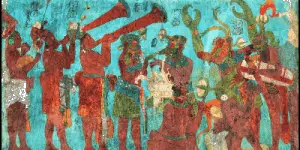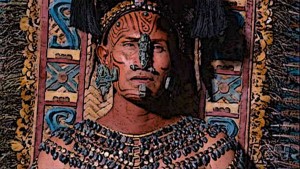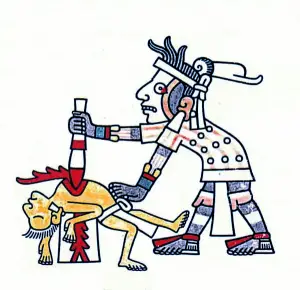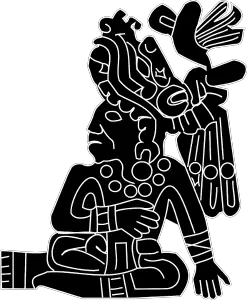Mayans were a people who gave up a nomadic lifestyle sometime in the 2nd millennium B.C. and eventually settled down for agriculture.
By 500 B.C., Mayans had clustered together in different towns some of which became population hubs and eventually grew into huge cities.
Mayans were distinguished on account of their unique cultural traits, although they inherited some of the aspects of the previous Olmec civilization.
Although the Mayans existed in different city-states, the overarching similarities in the cultures of all these states made them all a part of the Mayan civilization.
Historians are unable to trace back the exact origins of the Mayan people.
One of the very probable origins of the Mayans are in the previous Olmec civilization which thrived in Mesoamerica from 1400 B.C. to sometime around 500 B.C.
Although no direct evidence of the Mayans originating from Olmecs exist, the fact remains that as soon as Olmecs declined around 500 B.C., the Mayan cities started becoming populous around the same time.
Other theories suggest that Mayans were nomadic tribes who settled down and developed into societies independent of the Olmec civilization.
In the beginning of the Mayan settlements, different tribes founded these settlements which eventually grew into towns and then cities.
So the peculiar and unique cultural traits of each tribe informed the later culture of the subsequent cities.
Although Mayan cities mutually shared many cities such as a general cosmic mythological view, many cities had their own unique deities as part of the total pantheon.
While the Mayan civilization was a collection of all these city-states, the cities themselves were often pitted against each other probably because of their mutual differences.

In the earlier period of mayan civilization, the leading warriors of the towns and cities became the guardians, and later rulers.
Initially, they were the ones who secured the town against external attacks, took lead in any attacks against the enemies and also carried out religious rituals.
Because of this, the right to rule became closely allied with divine sanction and as a result, ruler-ship became hereditary.
In later time, the priestly duties became separate from the duties of the kings or rulers, becoming the prerogative of a separate priestly class.

Mayan rulers claimed to be divinely sanctioned to rule over their people.
Nobility was a very important part of the Mayan social structure.
It began with the relatives of the earliest rulers and kings, later becoming an extensive class and appendage to the royalty.
The nobility wielded a lot of influence and power over Mayan society. They usually occupied positions in civil and political administration. They also served as military chiefs during wars.
Within a given Mayan city, the nobility lived near the royal palaces and religious complex while the commoners lived farther away.
The nobility often acted as patrons of arts and culture in Mayan cities, hiring artists and craftsmen.
Mayan priests held a lot of power in the Mayan society.
Priests acted as intermediaries between the Mayan gods and the common people. They overlooked religious rituals, carried out religious ceremonies and performed human sacrifices at pyramid-temples.
The priests in Mayan society were also tasked with the development of sciences such as astronomy, mathematics and medicine.
They were the only ones who penned down books called codices. Because of their authority over the sciences, priests were the primary educators of the children of the nobility.
In terms of social status, the priestly class was ranked alongside the nobility in the Mayan society.

Mayan Priests would often remove the heart of a human Sacrifice
Although the warriors weren’t exactly an explicit social class in the Mayan society, they were distinguished on the basis of their occupation.
Mayan cities were frequently engaged in warfare which was often a means to find human victims for ritual sacrifices.
They were rigorously trained and were considered fierce warriors in the service of Mayan gods.
Successful warriors who brought captives to the city for sacrifices were highly esteemed among the Mayans.
In some cases, the warriors were considered more powerful than the nobility and rose to contest claims of rulership.
The men of the nobility were warriors and administrators. They overlooked and managed the huge populations of Mayan cities, dispensing tasks such as criminal punishments, management of agricultural produce and trade ties with other Mayan cities.
Mayan men were generally concerned with outdoor activities.
Men of commoner origin worked as farmers and hunters. They also worked as builders and architects on Mayan monumental structures which included pyramid-temples and other religious buildings.
Men of merchant class engaged in trade while craftsmen served a specific noble lord in return for guarantees of food and living securities.

Mayan women were confined to a rather limited role. They looked after the households and tended to the bringing up of the children.
They also looked after the personal gardens situated next to Mayan houses.
In their spare time, Mayan women wove clothes which were considered an important product in the Mayan society.
Women from the nobility class sometimes assumed a more active role.
In some extant Mayan sources, noble women are depicted as overlooking religious rituals and ceremonies.
This shows that they enjoyed certain religious authority.
At the end of the Classic Period, some Mayan women ascended to the position of queens, effectively ruling Mayan cities.
Mayans were a nomadic people who settled down to an agricultural lifestyle during the 1st millennium B.C. in Mesoamerica.
By 500 B.C., larger Mayan towns and populous cities had come into being.
Different tribes founded different towns which eventually grew into cities.
Each Mayan city-state was ruled by a king who passed on rulership as a hereditary right to his descendants.
The society was stratified along different classes which included the nobility, the priestly class and the commoners.
Religion played a very important role which made the priestly class a very important part of the social hierarchy.
Mayan civilization thrived until 9th century B.C. after which it underwent rapid decline.